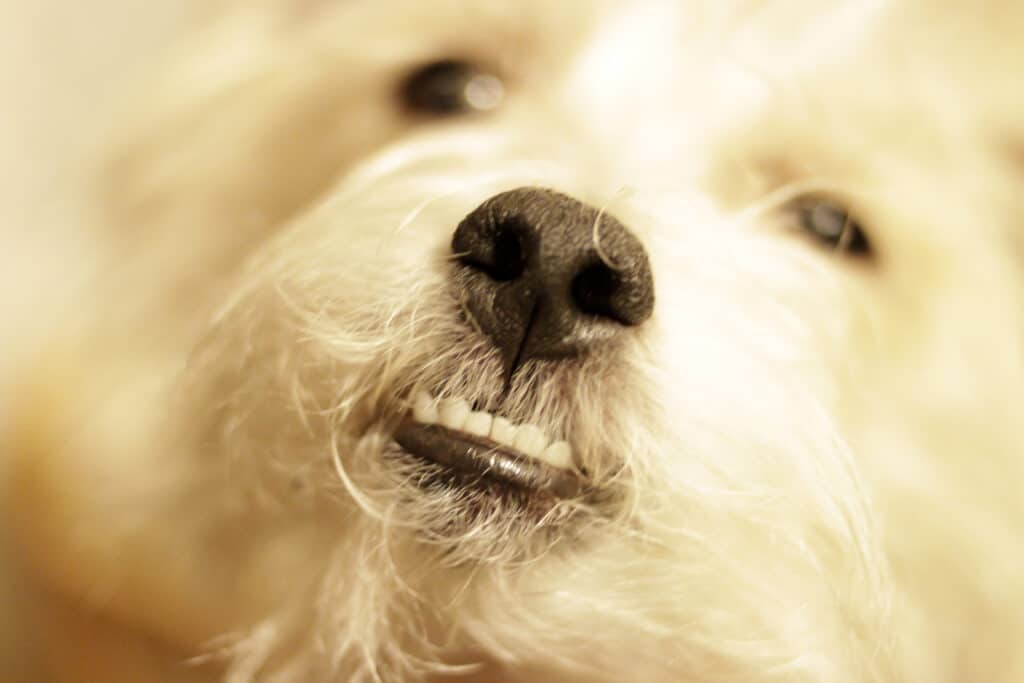Brushing teeth for dogs and cats: The art of animal dental care
It's no secret that our four-legged friends are like family to us humans. But how often do we think about their oral health? Brushing the teeth of dogs and cats is an essential part of their care in order to prevent dental problems and gum diseases. In this article, we'll take a closer look at the art of brushing dogs and cats' teeth and give you valuable tips and tricks to keep your furry friends' smiles bright.

The importance of brushing teeth for dogs and cats
Avoidance of dental problems and respiratory diseases
As with humans, brushing your dog's and cat's teeth can help prevent plaque and tartar build-up, which can lead to gum disease, tooth loss and, in some cases, even systemic disease. Watch for signs of dental problems in your pets, such as bad breath, bleeding gums, or difficulty chewing.
The right tools for dental care
Toothbrushes and toothpaste
When brushing your dog's and cat's teeth, it is important to use special toothbrushes and toothpaste for pets. Human toothpaste often contains fluoride and other ingredients that can be harmful to our pets. Special pet toothpastes are available in different flavors that your furry friends might like.
Finger brushes and dental wipes
As an alternative to traditional toothbrushes, there are also finger brushes and dental wipes that can help care for your pets' oral health. They are usually easier to use and can effectively remove plaque.
How often should you brush your dog's and cat's teeth?
It is recommended to brush your dog's and cat's teeth at least three to four times a week for optimal results. Ideally, this should be done daily to ensure continued oral hygiene.
Step-by-step instructions for brushing your dog's and cat's teeth
- Introduce your pet to the process slowly: Start by getting your dog or cat used to being touched around the mouth before you start brushing their teeth.
- Introduce the Toothpaste: Let your pet try the toothpaste first so they can get used to the taste.
- Choose the right position: Sit or stand so that your pet is comfortable and you can easily reach his teeth. For dogs, it may be helpful to put them on an elevated surface, while cats may be better on your lap.
- Lift the lips: Gently lift your pet's lips to gain access to the teeth and gums.
- Brush teeth in circular motions: Use the toothbrush or finger brush to brush your pet's teeth in circular motions. Be sure to clean both the outside and inside surfaces of the teeth, paying particular attention to the molars and the area along the gum line.
- Praise your pet: Don't forget to praise and reward your pet throughout the entire process. This can help make brushing your teeth a positive experience.
FAQs about brushing teeth for dogs and cats
How often should I change my pet's toothbrush?
As with humans, you should change your pet's toothbrush every three months or when the bristles wear out.
Can I brush my pet's teeth with coconut oil?
Yes, coconut oil is a natural alternative to traditional pet toothpaste and can effectively help remove plaque.
What can I do if my pet won't let me brush my teeth?
In such cases, you can resort to alternatives such as dental wipes, dental chew sticks, or food additives that will help maintain your pet's oral health.
Additional tips for oral health for dogs and cats
In addition to brushing your dog's and cat's teeth, there are other ways to promote your pets' oral health:
- Regular Veterinary Checkups: Have your pet's teeth and gums checked by a veterinarian at least once a year.
- Feed a balanced diet: A balanced diet specific to your pet's needs can help maintain oral health.
- Offer teeth-friendly toys and treats: Chew and tug toys can help clean your pet's teeth naturally, while special dental health treats can help reduce plaque.
Conclusion
Brushing the teeth of dogs and cats is an essential aspect of animal care that is often overlooked. Learning proper techniques and using appropriate tools can significantly improve your furry friends' oral health. Additionally, you should always watch for signs of dental problems and veterinary care if necessary . A balanced diet and tooth-friendly toys can also help keep your pets' teeth and gums healthy. By incorporating dog and cat teeth brushing into your daily routine, you can ensure that your four-legged family members lead a happy and healthy life.
